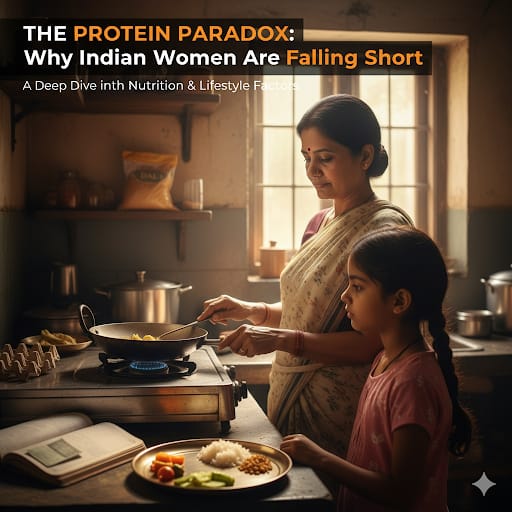- Mansafa's Newsletter
- Posts
- Why Indian women are protein deficient?
Why Indian women are protein deficient?

In India, a nation with a rich vegetarian heritage, a quiet health crisis is unfolding on women’s plates.
The average diet, rich in grains and legumes, is often critically low in protein.
This isn’t a simple dietary choice or a lack of care. It is the result of two powerful, intersecting forces: - a deep-seated cultural fear of becoming “masculine”
-the unspoken pressures of economics and self-sacrifice.
Reclaim muscle as your most crucial metabolic organ.
One of the most myths holding women back is the fear that eating more protein or lifting weights will make them “bulky.”
Let’s be clear: this is a hormonal impossibility for the vast majority of women. Without high levels of testosterone, women cannot build large, bulky muscles by accident.
The conversation around protein needs a radical reframe.
Muscle is not an aesthetic choice; it is your most critical metabolic organ.
For Indian women, who have a well-documented genetic predisposition to insulin resistance and type 2 diabetes, muscle is a non-negotiable defense system.
Think of your muscles as the body’s primary “glucose sink”—a giant sponge for the sugar from your blood.
The more muscle you have, the more efficiently your body can manage blood sugar, requiring less insulin to do the job.
When we don’t consume enough protein, we lack the raw materials to build and maintain this vital metabolic sponge. For a population prone to metabolic disease, this is not a small risk.
The Weight Self-Sacrifice.
Even with this knowledge, powerful external forces often stand in the way. The first is simple economics. In a household budget, high-quality protein sources like paneer, nuts, good-quality dairy, or even lentils in sufficient quantity are significantly expensive.
Filling a family’s plates with roti and rice is far more affordable than ensuring everyone meets their protein needs.
This economic reality is compounded by a deeply ingrained cultural pattern of self-sacrifice. Women are conditioned to be the primary caregivers, and this role often translates to their own nutrition.
They are the last to eat, and they eat what is left.
The most nutritious and protein-rich portions of a meal are often prioritized for children and male family members.
The resulting protein deficiency is not a personal failure; it is the predictable outcome of a system where a woman’s health is, by default, the lowest priority.
To begin solving this, we must see protein not as a luxury or a selfish pursuit, but as a fundamental act of self-preservation.
Prioritizing your own protein intake isn’t just about you; it’s about ensuring you have the strength and metabolic health to care for yourself and your loved ones for decades to come.
It’s free, and you can unsubscribe anytime—no hard feelings.
Reply